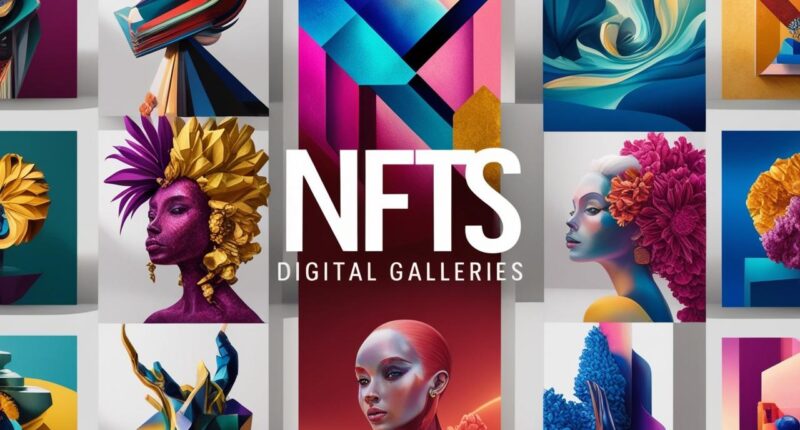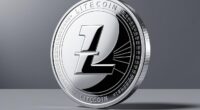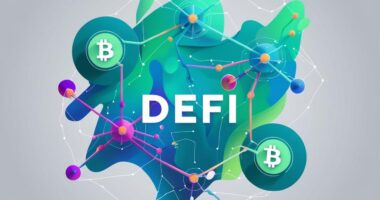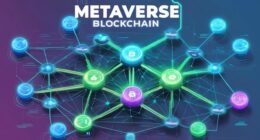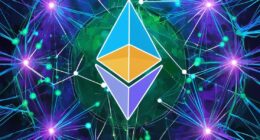Non-fungible tokens (NFTs) are unique digital assets that exist on a blockchain, primarily used to verify ownership and authenticity of digital items like art and collectibles. They operate within the cryptocurrency domain, and are mostly built on the Ethereum blockchain using the ERC-721 standard. The process of minting an NFT involves uploading a digital file to a marketplace and paying gas fees for the transaction. Their distinct nature and trading capabilities raise many interesting points worth exploring further.
As the digital landscape continues to evolve, non-fungible tokens, or NFTs, have emerged as a significant component of the cryptocurrency ecosystem. NFTs are unique digital assets represented on a blockchain, distinguished by their unique identification codes. Unlike cryptocurrencies such as Bitcoin, which are fungible and can be exchanged on a like-for-like basis, NFTs cannot be replicated or exchanged equivalently. They serve to prove ownership and authenticity of various digital items, including art, collectibles, music, and videos.
Typically, NFTs are built on the Ethereum blockchain using the ERC-721 standard. This framework allows for the creation and transfer of NFTs through smart contracts, which automate and secure the process. The blockchain maintains an immutable record of ownership and transactions, ensuring transparency. Its decentralized nature removes the need for a central authority, while the public ledger allows anyone to verify the authenticity and provenance of an NFT. Additionally, NFTs represent real-world items, improving efficiency and reducing fraud in various sectors. As awareness of the environmental impact of NFT minting grows, many artists and consumers are seeking more sustainable alternatives.
The process of creating NFTs, known as “minting,” involves uploading a digital file and its associated metadata to an NFT marketplace. Once this is done, a smart contract is deployed to the blockchain to mint the token. Creators must pay gas fees in cryptocurrency for this transaction, and the newly minted NFT is assigned a unique token ID on the blockchain.
The minting process for NFTs involves uploading digital files and deploying smart contracts on the blockchain, resulting in unique token IDs.
NFTs are traded on popular marketplaces like OpenSea, Rarible, and Nifty Gateway, where transactions occur using cryptocurrencies, primarily Ethereum. The secondary market allows current owners to resell NFTs, often with the ability to program royalties for the original creators.
In 2021, total sales of NFTs reached an impressive $25 billion.
Frequently Asked Questions
Can NFTS Be Used for Physical Assets?
NFTs can indeed be used for physical assets, as they serve as digital tokens linked to tangible items. This technology allows for the verification of ownership and authenticity through blockchain and smart contracts.
Applications include luxury goods, real estate, and collectibles. While benefits include enhanced security and transparency, challenges such as ensuring secure connections between tokens and items, regulatory compliance, and consumer adoption must be addressed for effective implementation.
How Do I Create My Own NFT?
To create an NFT, one must first select a unique digital asset, ensuring its originality and proper file format.
Next, research suitable blockchains and marketplaces, comparing transaction costs. After choosing a platform, create an account and set up a compatible crypto wallet.
Then, upload the digital asset, fill in its details, set royalties, and pay necessary fees to mint the NFT.
Finally, list the NFT for sale and promote it through social media.
Are NFTS Environmentally Friendly?
NFTs are generally not considered environmentally friendly due to their high carbon footprint. Minting an NFT produces around 83 kg of CO2, while transactions related to NFTs contribute additional emissions.
Ethereum, the primary blockchain for NFTs, consumes substantial energy, comparable to entire countries.
However, efforts to reduce this impact include shifting to Proof-of-Stake systems and using blockchains with energy-efficient practices.
Artists and platforms are also exploring carbon offset programs to mitigate environmental effects.
What Happens if an NFT Is Deleted?
When an NFT is deleted, it cannot be fully removed from the blockchain, as the records persist. Instead, the NFT can be “burned” by sending it to an inaccessible address, eliminating its circulation.
If the underlying asset is deleted, the NFT may lose its value, as the connection is broken. However, the blockchain retains metadata and transaction history, and collectors might still find value in the “empty” NFT for historical significance.
How Do Royalties Work in NFT Sales?
Royalties in NFT sales are payments made to the original creator each time their digital asset is resold. This payment is typically set by the creator during the minting process and encoded in a smart contract.
Generally, creators receive a percentage, usually between 5-10%, from secondary sales. These transactions are automatically executed on the blockchain, providing ongoing revenue and encouraging artists to produce high-quality digital content.
However, enforcement can vary across different marketplaces.
References
- https://usa.kaspersky.com/resource-center/definitions/what-is-an-nft
- https://www.grandviewresearch.com/industry-analysis/non-fungible-token-market-report
- https://mdpiblog.wordpress.sciforum.net/2022/04/20/everything-you-need-to-know-about-nfts/
- https://en.wikipedia.org/wiki/Non-fungible_token
- https://www.security.org/digital-security/nft-market-analysis/
- https://www.airnfts.com/post/what-is-non-fungible-token-nft-and-how-does-it-work
- https://aws.amazon.com/web3/nfts-explained/
- https://explodingtopics.com/blog/nft-trends
- https://www.investopedia.com/non-fungible-tokens-nft-5115211
- https://www.techtarget.com/whatis/feature/Compare-NFTs-vs-cryptocurrency-vs-digital-currency
